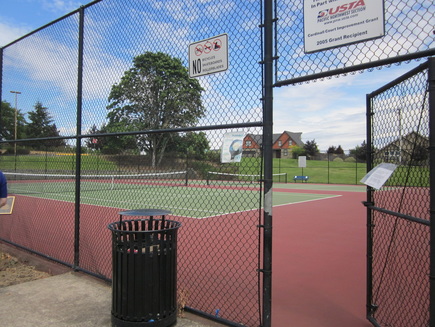Neighborhood Parks
typical acreage
2 - 20 acres; typically 5 - 10 acres
|
service area description
Primarily serves residents located within walking and biking distance - 1/2 mile radius. These parks may also attract users from greater distances.
|
definition
Neighborhood parks provide "close-to-home" recreational opportunities for nearby residents. Typically five to ten acres in size, these parks are designed to serve neighbors within walking and bicycling distance of the park, or about 1/2 mile. Neighborhood parks include amenities such as playground equipment, outdoor sport courts, sport fields, picnic tables, pathways, and multi-use open grass areas.
A neighborhood park should accommodate the needs of a wide variety of age and user groups. These spaces are designed primarily for non-supervised, non-organized recreational activities. The needs of pedestrians, bicyclists and other non-
motorized travellers should be a high priority consideration in the design of these parks. Connectivity to the surrounding neighborhood is vital to these parks. Sidewalks, bike paths, crosswalks and connections to larger trail systems should be established. These parks may also be co-located with school facilities.
A neighborhood park should accommodate the needs of a wide variety of age and user groups. These spaces are designed primarily for non-supervised, non-organized recreational activities. The needs of pedestrians, bicyclists and other non-
motorized travellers should be a high priority consideration in the design of these parks. Connectivity to the surrounding neighborhood is vital to these parks. Sidewalks, bike paths, crosswalks and connections to larger trail systems should be established. These parks may also be co-located with school facilities.
Benefits of a Neighborhood park
- Provides a variety of accessible recreation opportunities for all ages.
- Provides opportunities for social and cultural activities.
- Contributes to community identity.
- Serves recreation needs of individual, families, small and large groups.
- Provides green space within neighborhoods.
- Protects and enhances the City’s tree canopy.
- Contributes to health and wellness.
- Connects residents to nature.
- Provides green space within neighborhoods.
Design criteria for neighborhood parks
Approximately two-thirds of a neighborhood park should be reserved for active recreation uses such as: ball fields, tennis, basketball and volleyball courts, open grass area for free play, children’s playgrounds and space for outdoor events. Viewsheds should be highlighted by the placement of picnic areas (some should be reserveable), benches, gardens and natural areas. Vegetation can be thinned or planted on the site to accentuate or hide scenes of the surrounding valley. Paved pathways should direct users to areas within the park as well as to adjacent trails, greenways, streets and sidewalks.
Housing developments should to create access to neighborhood parks if they are located on the boundary of a park or adjacent to other neighborhoods with parks.
Housing developments should to create access to neighborhood parks if they are located on the boundary of a park or adjacent to other neighborhoods with parks.


